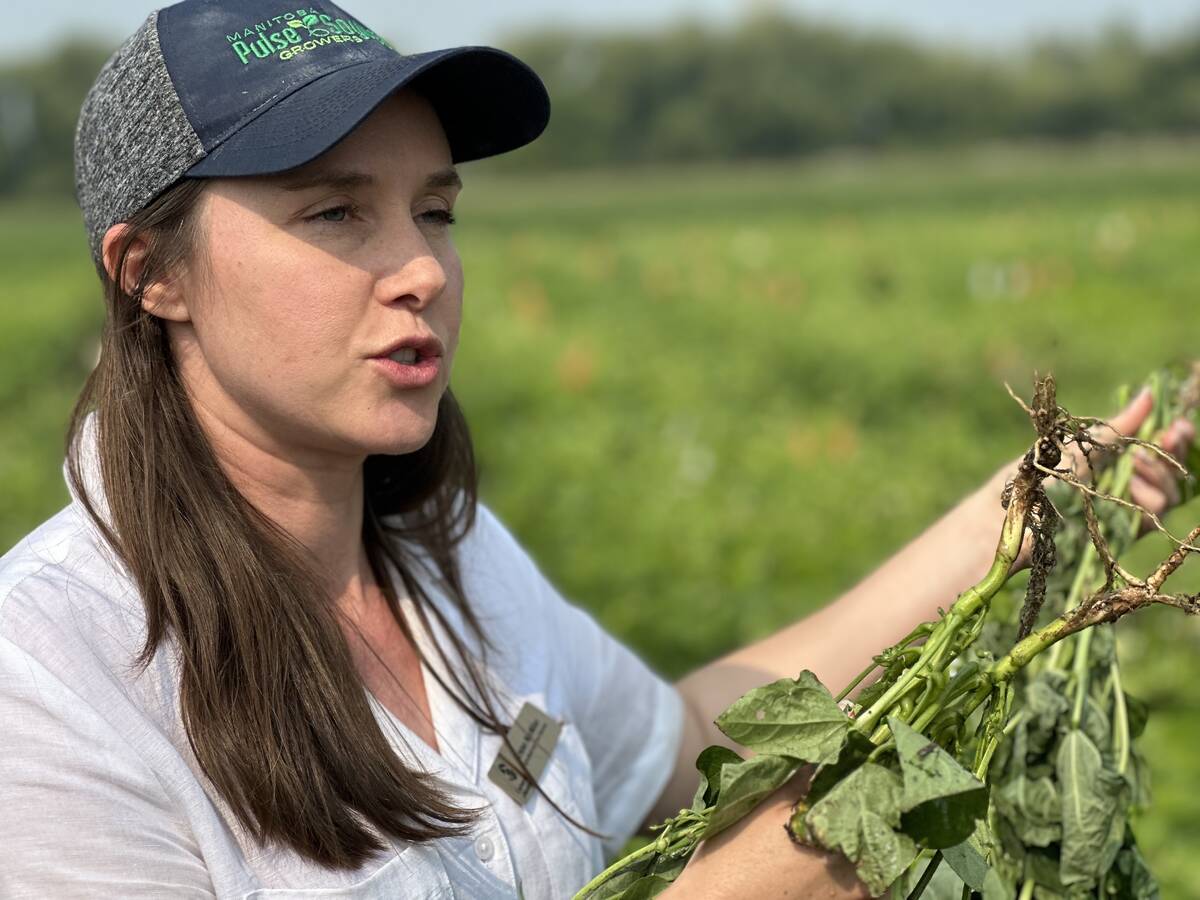SASKATOON – Peas have rapidly become one of the most popular special crops on the Prairies.
Since 1991, pea acreage has surged by 400 percent to set a record last year at 1.76 million acres.
Production, too, set a record at 1.4 million tonnes.
But the best news for growers, says Tyler Thorpe, analyst with International Grain Trade Canada, is that Canada has been able to keep up its exports, even with the surge in production.
“We’re finding a use for over 90 percent of all peas produced,” he told an audience of about 1,200 in a presentation held last week during the Saskatchewan’s Pulse Crop Development Board annual meeting.
Read Also

Lower nitrogen rates in dry beans could pay off for farmers
Manitoba research is testing whether reduced nitrogen fertilizer in dry beans can maintain yields while cutting costs and lowering greenhouse gas emissions.
If strong sales continue, Thorpe doesn’t see much risk in pea prices for the coming year.
He’s looking for prices for No. 2 grade or better food peas of $4.75 a bushel, while feed pea bids should be in the $4.50 range.
During 1994 about 62 percent, or nearly 900,000 tonnes of the Canadian crop, were feed peas grown for livestock consumption.
The European Union is by far Canada’s best feed pea customer, taking 90 percent of production. Spain is the biggest European buyer.
Thorpe noted nearly 10 percent of the feed peas produced last year were used domestically.
Best markets
Of the 350,000 tonnes of food peas produced for human consumption, Pacific Rim and Latin American countries were Canada’s best markets.
India and Pakistan were the biggest Asian buyers, while Cuba and Colombia took the most out of the Latin American countries.
The peso crisis in Mexico has made sellers jittery. The same thing will happen to the currencies of other Latin American buyers, Thorpe said.
And while the Pacific Rim mostly buys peas for human consumption, a new market may open up feed peas to Thailand, the Philippines, South Korea and Malaysia. “They’re looking for more feed ingredients for pork.”
Thorpe said 1994 also marked the largest single shipment of Canadian peas to a new customer, Dubai in the Middle East.
The Arab country bought 32,000 tonnes – 25,000 tonnes of yellow peas and 7,000 tonnes of green peas. The shipment also included 7,000 tonnes of Laird lentils.














